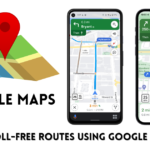Future of Employment After AI
The nature of work is changing dramatically as we approach the fourth industrial revolution, which will be characterized by previously unheard-of advances in artificial intelligence (AI). The introduction of AI into a variety of industries has raised questions and concerns about what will happen to employment in the future when AI is fully implemented as well as how people, organizations, and societies will manage this revolutionary time.
The Impact of AI on Traditional Jobs

-
Automation and Job Displacement
One of the primary concerns surrounding AI is its potential to automate routine tasks, leading to job displacement in certain sectors. Industries such as manufacturing, customer service, and transportation are witnessing the gradual replacement of human labor with AI-powered systems and robots, signifying a significant shift in the Future of Employment After AI. While this can enhance efficiency, it raises questions about the fate of jobs traditionally performed by humans.
-
The Rise of New Job Roles
Conversely, the integration of AI is giving rise to entirely new job roles and industries. The demand for skilled professionals in AI development, machine learning, data science, and cybersecurity is escalating, shaping the Future of Employment After AI. As automation takes over routine tasks, there is a growing need for individuals with the ability to design, implement, and maintain AI systems.
The Evolution of Skills in the AI Era

-
Upskilling and Reskilling
In the Future of Employment After AI, a proactive approach to skill development is imperative given the evolving nature of the employment landscape. Initiatives for reskilling and upskilling employees are becoming essential for people and organizations to remain relevant. To fully utilize AI technologies, workers must learn new abilities like creativity, critical thinking, and emotional intelligence—qualities that machines do not yet possess.
-
Lifelong Learning and Continuous Adaptation
The concept of lifelong learning is gaining prominence as individuals recognize the need to adapt continuously to evolving technologies. Employers are encouraged to invest in continuous training programs to ensure their workforce remains agile and equipped to handle the demands of the AI-driven future and the Future of Employment After AI.
The Emergence of Hybrid Workforces
-
Collaboration Between Humans and Machines
Rather than replacing humans entirely, AI is becoming a collaborator, augmenting human capabilities and enhancing productivity in the Future of Employment After AI. The concept of a hybrid workforce, where humans and machines work together seamlessly, is gaining traction. This approach leverages the strengths of both, with AI handling repetitive tasks and humans focusing on complex problem-solving and creativity, showcasing the symbiotic relationship in the Future of Employment After AI.
-
Ethical Considerations in AI Implementation
As AI becomes an integral part of the workforce, ethical considerations must be addressed in the Future of Employment After AI. Issues such as bias in algorithms, data privacy, and the impact of AI on marginalized communities need scrutiny. Striking a balance between technological advancements and ethical principles is crucial for creating a future where AI benefits everyone and shapes the Future of Employment After AI.
Economic and Societal Implications
-
Economic Disparities and Job Market Dynamics
The widespread adoption of AI may contribute to economic disparities in the Future of Employment After AI, as certain industries flourish while others decline. Governments and policymakers must be proactive in addressing these disparities by implementing policies that foster inclusive economic growth and provide support for those affected by job displacement and the Future of Employment After AI.
-
Social Safety Nets and Universal Basic Income
The potential for job displacement has sparked discussions about the need for robust social safety nets and innovative policies like universal basic income (UBI) in the Future of Employment After AI. These measures aim to provide a financial cushion for individuals affected by automation, allowing them to pursue retraining or alternative career paths.
Conclusion
The Future of Employment After AI in the age of AI is undoubtedly complex, marked by both challenges and opportunities. Adapting to this transformative era requires a collaborative effort from individuals, businesses, and policymakers. By embracing continuous learning, fostering ethical AI practices, and prioritizing inclusivity, we can shape a Future of Employment After AI where the benefits of AI are harnessed for the betterment of society as a whole. As we navigate the evolving landscape of work, it is essential to view AI not as a threat but as a tool that, when wielded responsibly, has the potential to enhance human potential and drive unprecedented innovation in the Future of Employment After AI.
Read More:









